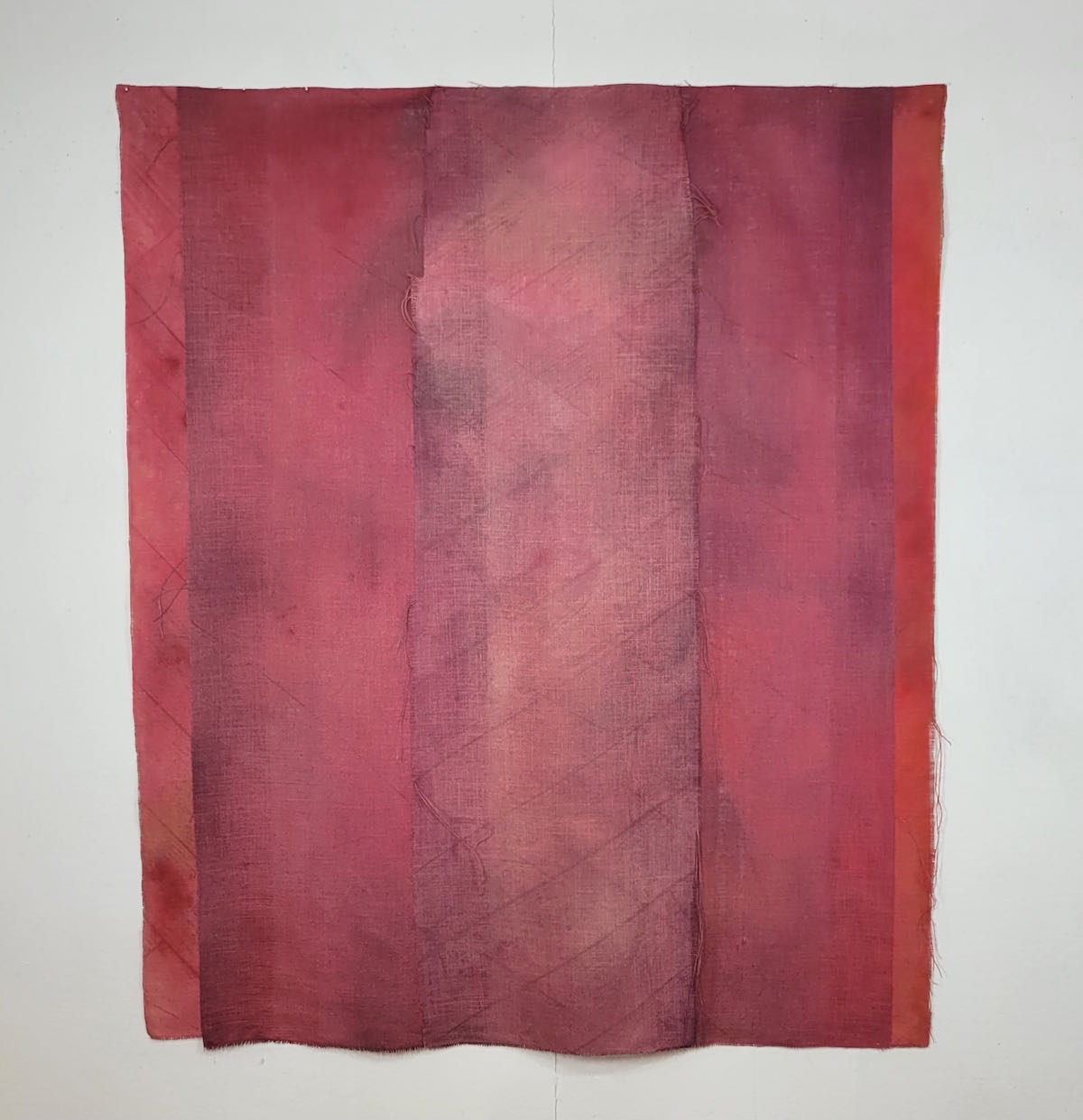
COLOR: THE PRIMARY MATERIAL
If color is the essence of our perception of the world the pairing of Steven Alexander and Grace Bakst Wapner in the Lockwood Gallery show "Color: The Primary Material" makes for an interesting discussion about the conventions of painting, the material used and the oscillation between organic form and minimal abstraction. Both Alexander and Wampler work within a vocabulary of minimalism but with very different approaches. I would like to get to the source of their strategies as I am concerned with the period of probation or conception so I have posed questions about color as the starting point for each of these artists.
Grace Bakst Wapner's work is ephemeral, intimate and delicate and constructs a new way of approaching painting.
Grace, how does the impulse to use color arise?
Color excites me. I play with color in my head, I imagine one color combined with another color and then with a third. I get taken by color combinations I see in other artist’s work, or in a gravel path, or the accident of one color next to another while working, or in an ad for a movie or in the color of a vase. In other words I am always alert to color. The impulse to work with color comes from the desire to see it arranged and juxtaposed in the most interesting and exciting way so that I may see it. The impulse comes from wanting to see it. But then, a most crucial but then, it must inform the content of the piece I am working on, it must make emotional sense, it must be integral to what I am trying to get at. This is the constant struggle. It must illuminate the unknown.
Do you do preliminary design on paper before you begin to make the works Grace?
I often do make preliminary sketches but the work rarely turns out to be what I have initially imagined. A dialogue with what I am working on takes over. It is this back and forth with all the surprises along the way that makes the process compelling. It is the seeing of what comes next, of seeing what it turns out to look like after all, that pushes the work forward until 2:00 in the morning.
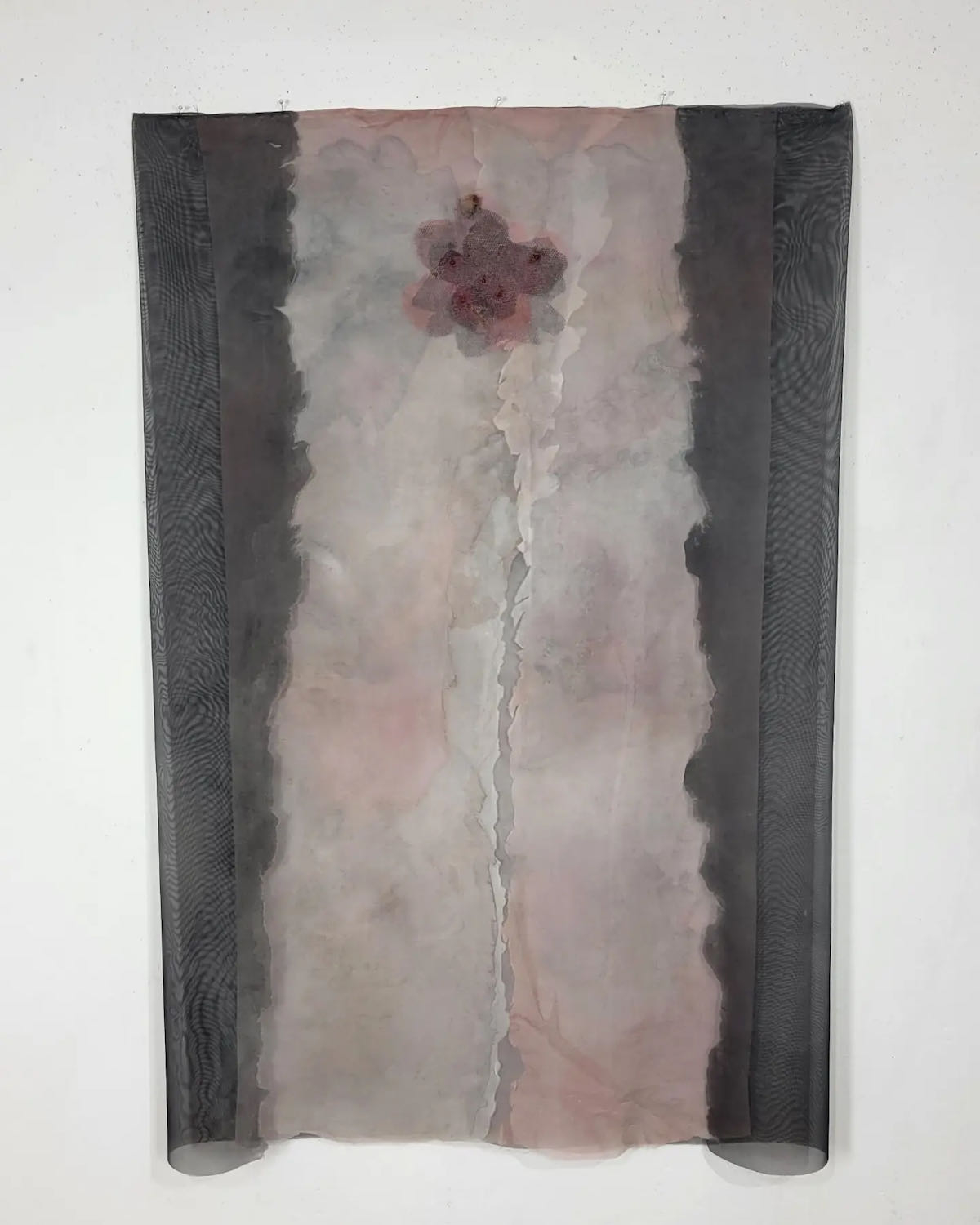
Grace I'd like to know how the selection for the works on view were made?
The selection of the pieces were made by the curator of the show, Alan Goolman, with some input from me.
During which period in your career where are you the most fertile and immersed in the avant-garde milieu of New York?
I became conscious that there existed a NY Art Scene when I was invited to share studio space with Eva Hesse and Tom Doyle. Before then I had no idea there were galleries or so many artists working that weren’t in museums. It was stimulating to see what people were making, I had always made things in solitude and it introduced me to the world of possibility. To the notion that art could be what you wanted it to be. I had grown up with a love of dance so I began to make installations about defining
space and then about how people interact within space, and then large walls and barriers with openings through which you could or couldn’t see the space beyond. I see now that some of the same ideas that occupied me then persist in the work now.

I am sure that people respond well at once to your work's size, with former associations and memory. Can you tell us a bit about your past friendship with Eva Hesse and the influence such friendship may have had on your work?
You ask about Eva and how she influenced me. She encouraged me to work and took my work to galleries. She told me "decoration is the art sin" which I took to mean never embellish, never add anything extraneous but took me a long while to reconcile with my love of decoration. She taught me a woman could be ambitious. Perhaps she helped me understand you must make work that is close to the bone. She influenced me in many of the unknown ways a close friend does. And does when you are with her when she dies and she is 34 years old and you are 36. But to try and answer your question I think my work has changed and evolved most here in our house in the country surrounded by woods and next to an ever changing moving stream.
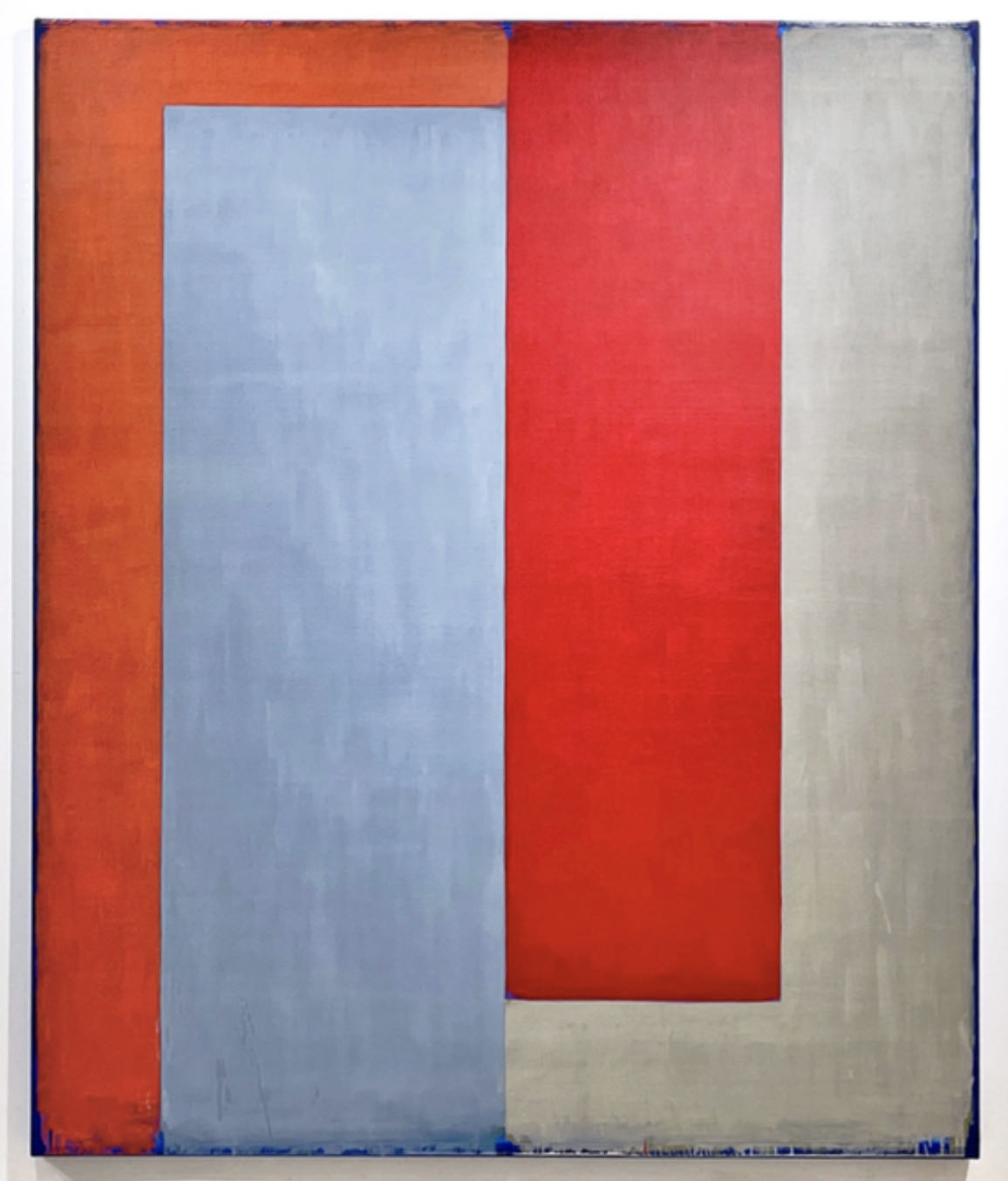
Steven Alexander's work has much to do with the relationships of color where the washes on canvas and brings you on an adventure -- while drawing on associations from the past.
If color is the primary material with which you work how do you begin. Do you do preliminary work on paper? Is the translucent under painting then over painted with a complimentary color wash?
I have two different ways to begin. First is with small pencil thumbnail sketches in which I develop the basic configurations and value relationships. These are very loose and quick, but allow me to arrive at configurations that present the simplest setting for optimum spatial dynamics as conveyed by the value relationships. The second device is utilizing my rudimentary abilities in Photoshop. I do very basic color studies, experimenting with color relationships, and sometimes using the mechanical software to arrive at unexpected color situations. Then employing the configurations from the pencil sketches, I find various color equivalents for the value contrasts. All of this brings me to a starting point for a painting. Once I begin the actual painting, the preliminary sketches recede, as I build the piece out of paint, and anything can happen. Each decision is an intuitive response to the results of a previous decision. Because colors are applied in thin layers, the under painting affects the subsequent color in sometimes unpredictable ways. The final layers are very thin and translucent, and tend to unify the surface and emphasize the surface/color nuances while slightly reducing the color saturation. Even after almost fifty years, this whole process still feels experimental, and each outcome is surprising to me. I am constantly changing the procedures and materials in various ways in attempts to achieve a more sensual surface and more resonant color situations. But I often feel that, where color is concerned, my sense of control is illusory.
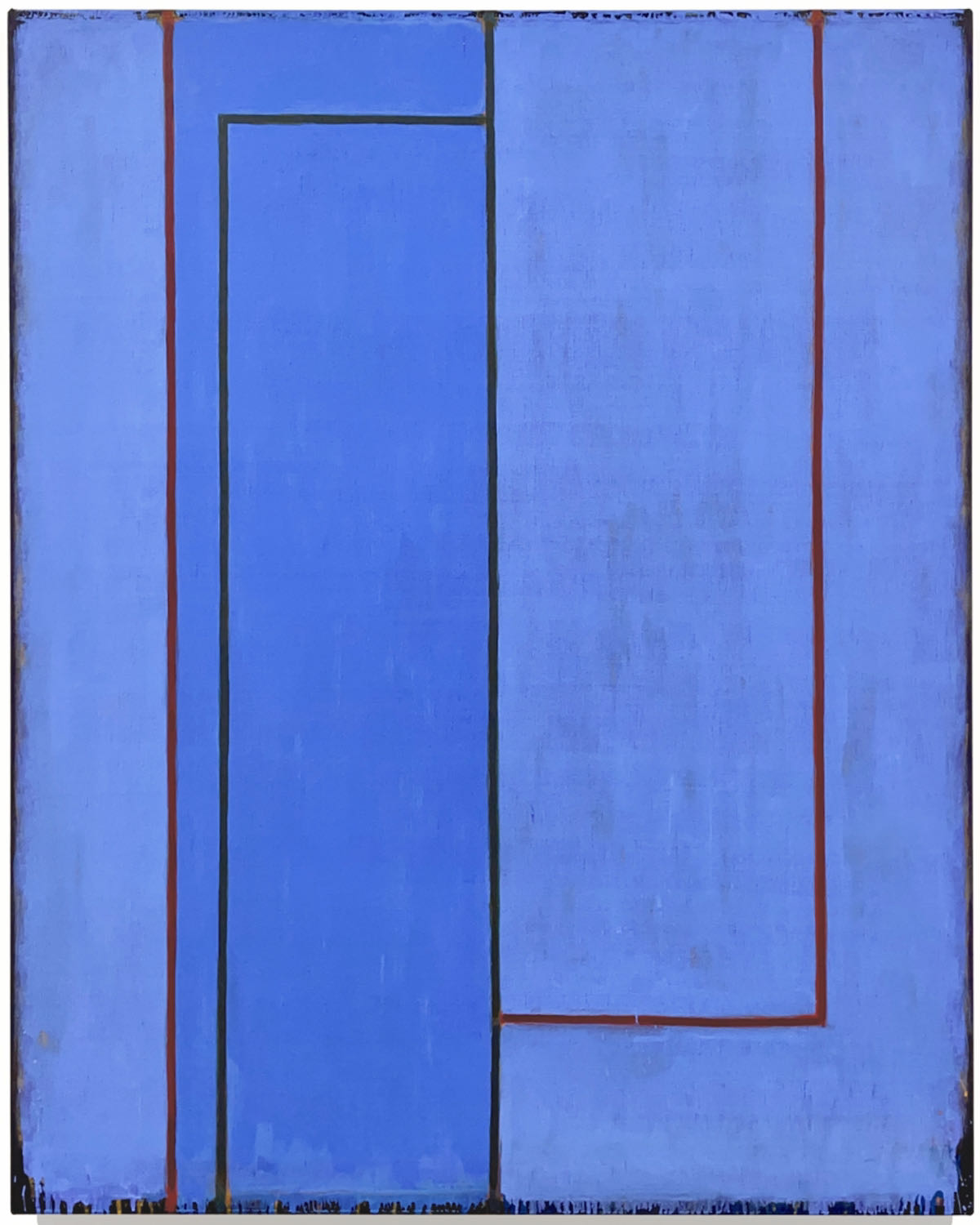
What is the source of the color strategies and where do you get the impulse to use a particular color?
My color sources are both art historical and observational -- the ghostly Cimabues at Assisi, the hallucinatory color of Tibetan Buddhist painting, the soft light of Titian and Bellini, the expansiveness of Rothko....and also the startling color events that occur everywhere in nature, and in the urban environment. Often, by starting with one color idea, the painting sort of makes itself as one relationship calls for another. Just as I re-employ certain configurations, I sometimes re-address certain color combinations, always with the intent of getting more out of it, finding some new variation or context. I look for color relationships that are both surprising and inevitable; that might jar your senses and attract your contemplation. I often think of the painting in terms of sound, and I see the layers of color as a sort of tempering, adjusting the timbre of the color with overtones and undertones, creating a scenario that is more than the sum of its parts. The object is of course to engage the viewer's imagination because it is in the viewer's consciousness that meaning resides. So the painting functions much like a mantra -- as an opening in the clutter of reality -- a place where one can slow down, look, and through contemplation experience the present moment.
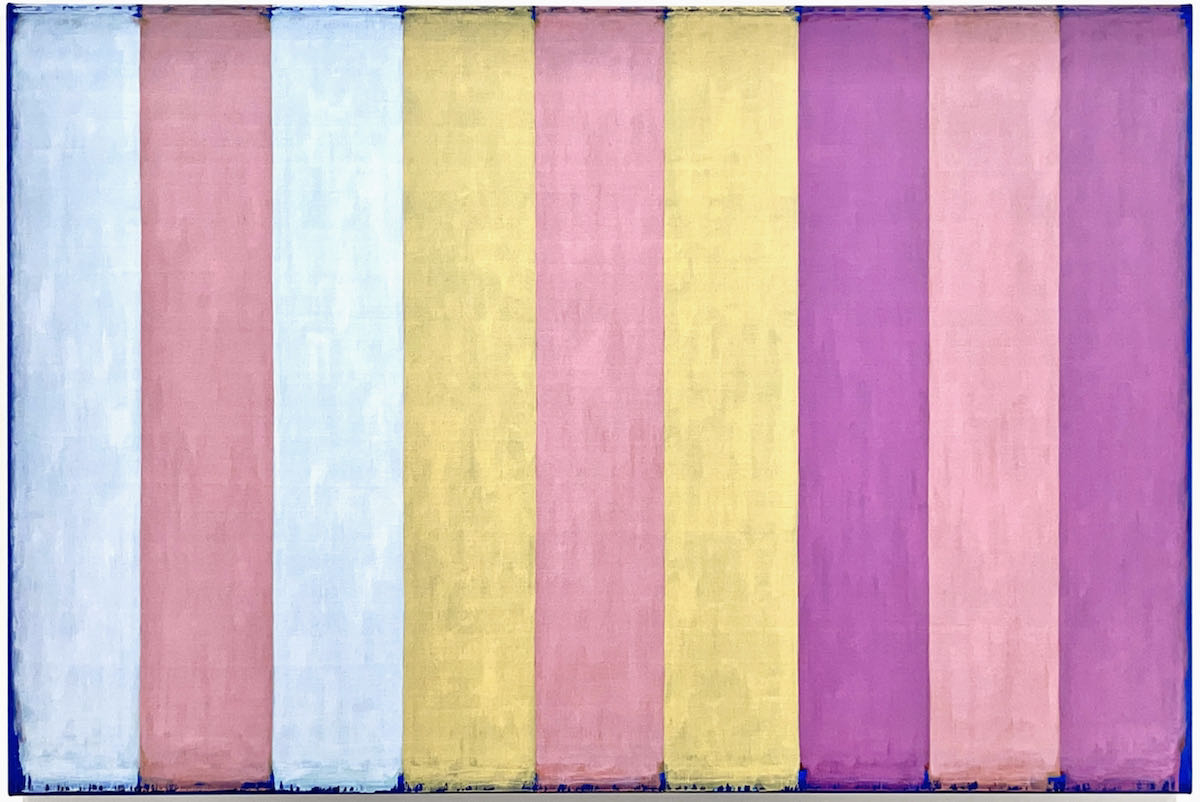
What are the situations that you hope to set up for the viewer? Transitions and unique color situations? How do you get the majestic gradations? Do you find yourself repeating some of the tones?
Because of the nature of the Lockwood exhibition and space, the works in this show are distinctly intimate, and perhaps engage in a bit different way than larger scale paintings which are more immersive. Many of the works in this show were in fact preliminary to much larger paintings, and were sometimes initial forays into some new material or configuration. So, at least to my eye, there is a tentative or contingent aspect to some of these pieces that I enjoy for its sense of vulnerability.
It is the ongoing research and discovery, the ontological speculation, and the inclusive sensuality that continues to sustain painting as a poetic endeavor for me.
COLOR: THE PRIMARY MATERIAL
STEVEN ALEXANDER and GRACE BAKST WAPNER
SATURDAYS & SUNDAYS 11AM - 6PM CLOSES JULY 30TH
747 ROUTE 28 KINGSTON, NY 12401
